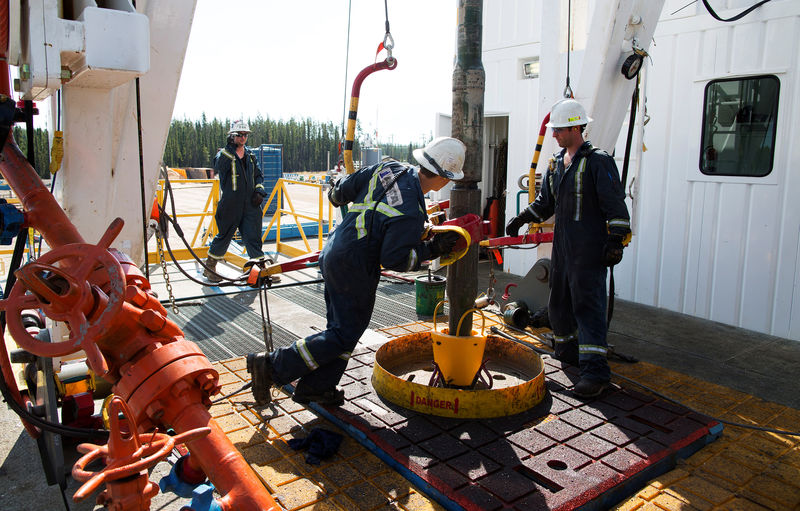Asia FX cautious amid US govt shutdown; yen tumbles after Takaichi’s LDP win
By Barani Krishnan
Investing.com -- With every technical chart for oil looking oversold, crude prices had to rise inevitably, but the litmus test for their rebound might be Tuesday’s CPI report and Wednesday’s rate decision/2023 outlook from the Fed.
Both U.K.-origin Brent and U.S. West Texas Intermediate, or WTI, crude were up about 2% each in Monday’s late afternoon trading in New York.
Brent crude was up $1.79, or 2.4%, trading at $77.89 by 13:51 ET (18:51 GMT). The global crude benchmark fell $9.47, or 11% last week, hitting a low of $75.14 — a bottom not seen since Dec 23, 2021.
WTI for January delivery was up $2.12, or 3%, reaching $73.14 per barrel. The U.S. crude benchmark ended last week down $9.28, or 11%, making it its worst week since the week ended March 25. WTI’s session low for last week was $70.11 — a bottom not seen since Dec 21, 2021.
Technicals aside, oil was propped up by the continued closure of a pipeline carrying Canadian heavy crude to the U.S. Gulf Coast of Mexico.
There was no timeline on how long it would take Canada's TC Energy (NYSE:TRP) Corp to clean up and restart its Keystone oil pipeline after more than 14,000 barrels of oil leaked on the line last week, forming the largest U.S. crude oil spill in nearly a decade.
TC Energy shut the pipeline after the spill discovered late last Wednesday in Kansas. The company told officials in Washington County, Kansas, that they have not yet determined the cause and were excavating around the 622,000 barrel-per-day Keystone line, a critical artery shipping heavy Canadian crude to U.S. refiners. The outage is expected to shrink supplies at the Cushing, Oklahoma storage hub, delivery point for benchmark U.S. crude oil futures, Reuters reported.
But the rebound in oil prices might also depend on how expectations for the CPI and Fed pan out.
While a 50-basis point hike from the Federal Reserve for December is all but baked in, investors will also be focusing on indications of how high rates may ultimately rise. The best indication for that will, of course, come from Chairman Jerome Powell’s news conference after the rate decision, but the precursor might actually be in Tuesday’s Consumer Price Index report for November.
Economists expect the CPI report to say that the annual rate of inflation has slowed to 7.3% from a yearly growth of 7.7% in October.
"While core goods prices in CPI are still very likely to decline in November given falling used car prices, a renewed increase in core goods PPI highlights that there remain some under-appreciated upside risks to goods prices into next year," Citigroup economist Veronica Clark said in comments carried by Reuters on Friday.
Data from last week showed that U.S. producer prices rose slightly more than expected in November amid a jump in the costs of services. But the underlying trend is moderating as supply chains ease and demand for goods ebbs.
A recent uptick in U.S. jobs data has also rekindled inflation fears, especially with wage growth accelerating in November.
In its bid to control surging prices, the Fed added 375 basis points to interest rates since March via six rate hikes. Prior to that, interest rates peaked at just 25 basis points, as the central bank slashed them to nearly zero after the global COVID-19 outbreak in 2020.
The Fed executed four back-to-back jumbo rate hikes of 75 basis points from June through November. While the more modest 50-basis point increase expected for December signals a pivot, the Fed has indicated it could turn aggressive again with rates in 2023 if inflation shows little sign of yielding.
